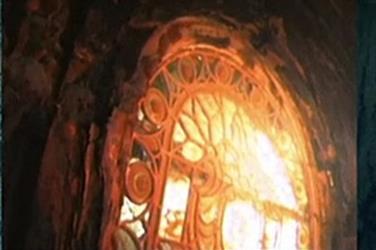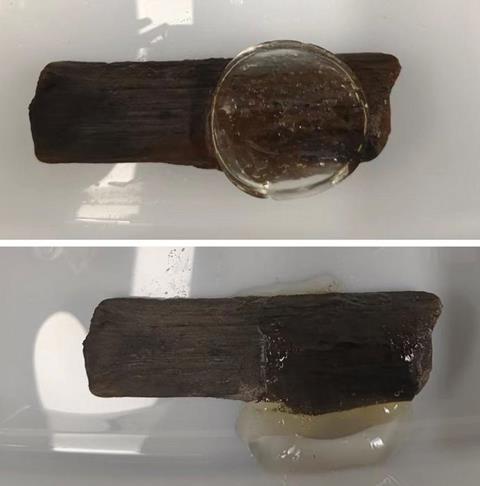From the RMS Titanic to the SS Endurance, shipwrecks offer valuable — yet swiftly deteriorating — windows into the past. Conservators slowly dry marine wooden artifacts to preserve them but doing so can inflict damage. To better care for delicate marine artifacts, researchers in ACS Sustainable Chemistry & Engineering developed a new hydrogel that quickly neutralizes harmful acids and stabilized waterlogged wood from an 800-year-old shipwreck.

Wooden artifacts from shipwrecks are drenched with seawater, an environment that enables acid-producing bacteria and wood-eating fungi to thrive. To prevent damage from acid and microbes, conservators usually remove water from these artifacts by freeze-drying or using a process that replaces the water with highly pressurized carbon dioxide or a viscous polymer. However, these processes can take months and increases brittleness or warps the artifacts.
A newer alternative is to plaster wet, historic wood with a gel that acts like a face mask, infusing the wood with acid-neutralizing or antimicrobial compounds. But peeling away the mask later can harm the item’s surface. So, Xiaohang Sun and Qiang Chen set out to develop a hydrogel that would disperse acid- and microbe-fighting compounds through the wood and gradually dissolve over time to avoid surface damage.
Anitmicrobial nanoparticles
The researchers began by mixing two polymers with potassium bicarbonate, an acid-neutralizing compound, and silver nitrate, which forms antimicrobial nanoparticles that link the polymers together to form a gel. By adjusting the amount of silver nitrate, they were able to create hydrogels with different staying power. Gels with less silver liquified after 3-5 days, and those with more silver remained a gooey solid.
READ MORE: 2,000-year-old shipworm mystery solved - its destructive skills are down to bacterial symbionts
READ MORE: Bacterial duo feed cuticle in wood-eating beetles
As a proof-of-concept approach, the team pasted hydrogels with varying amounts of silver onto 800-year-old pieces of wood from the Nanhai One shipwreck, which was discovered off China’s south coast. They found that each gel neutralized acid up to 1 centimeter deep after 10 days, but the dissolving gels that contained less silver did so more quickly, after 1 day.

The team also found that artifacts treated with the liquifying gels better maintained their cellular structure and were less brittle than those treated with the solid gels. The researchers say their new hydrogel could be used to preserve and strengthen wood from shipwrecks without causing additional damage, enhancing the ability to untangle the mysteries of the past.

No comments yet